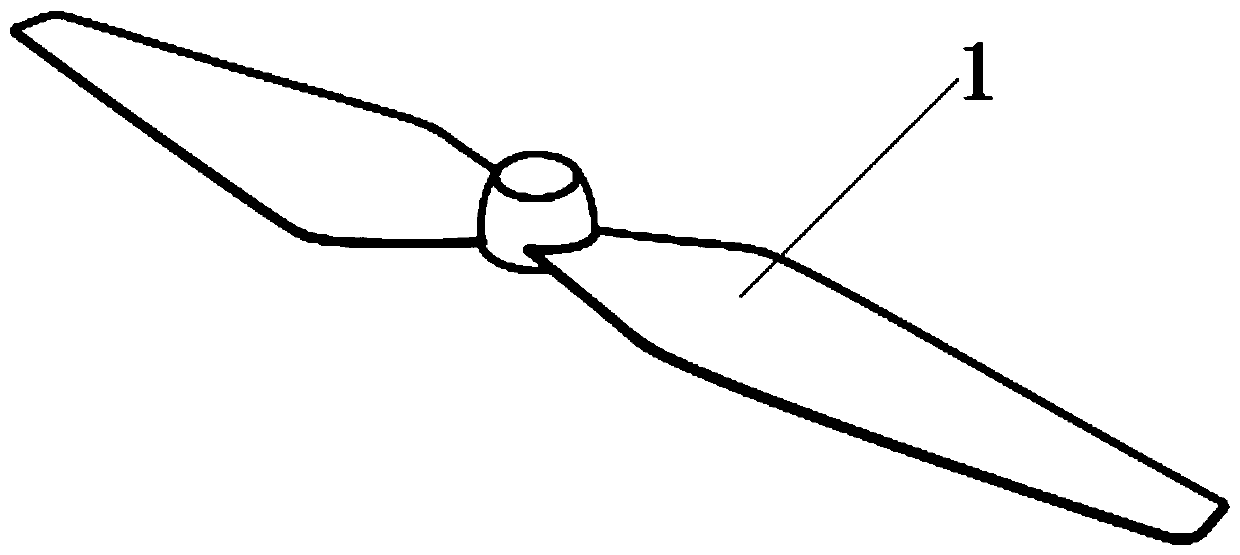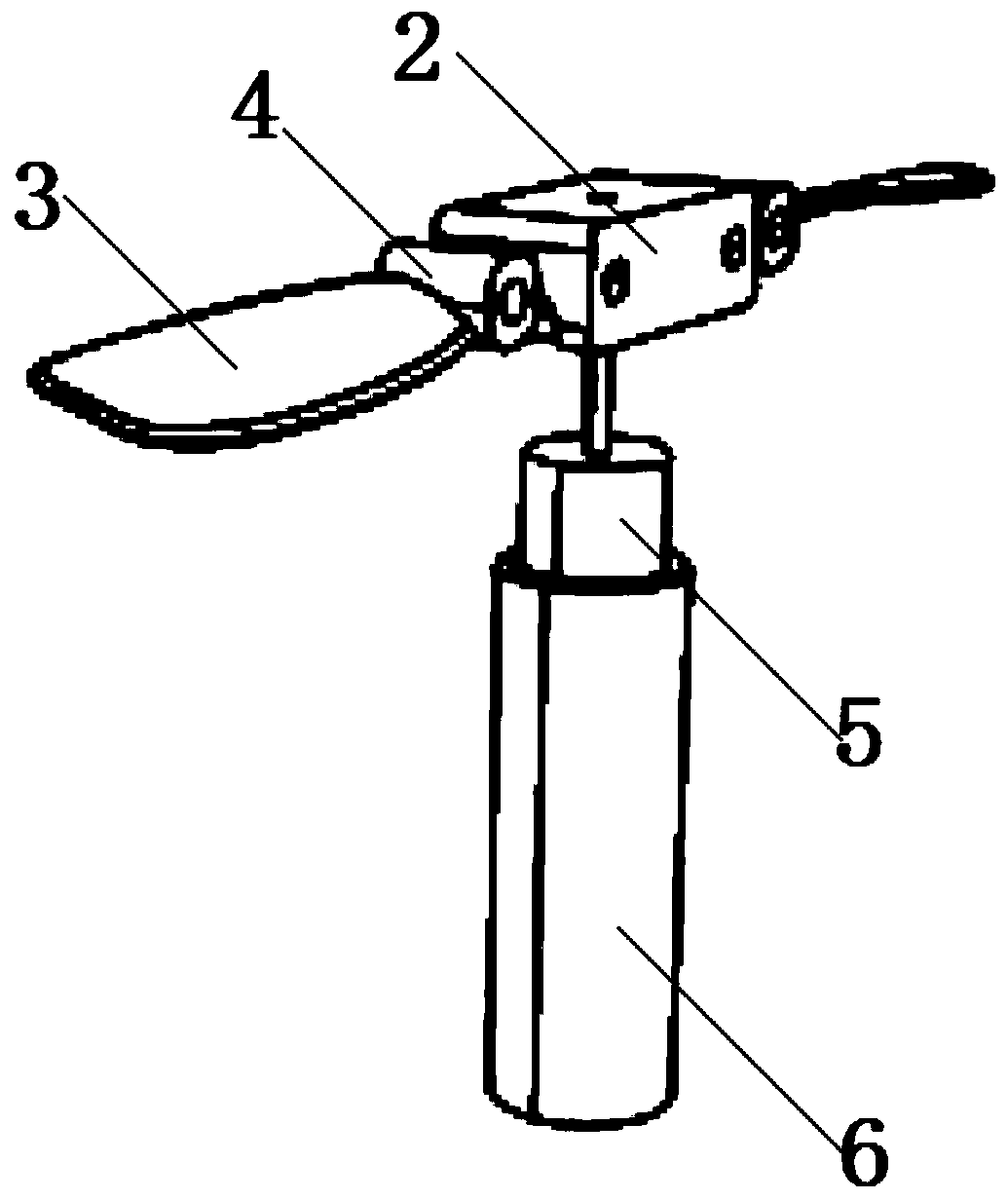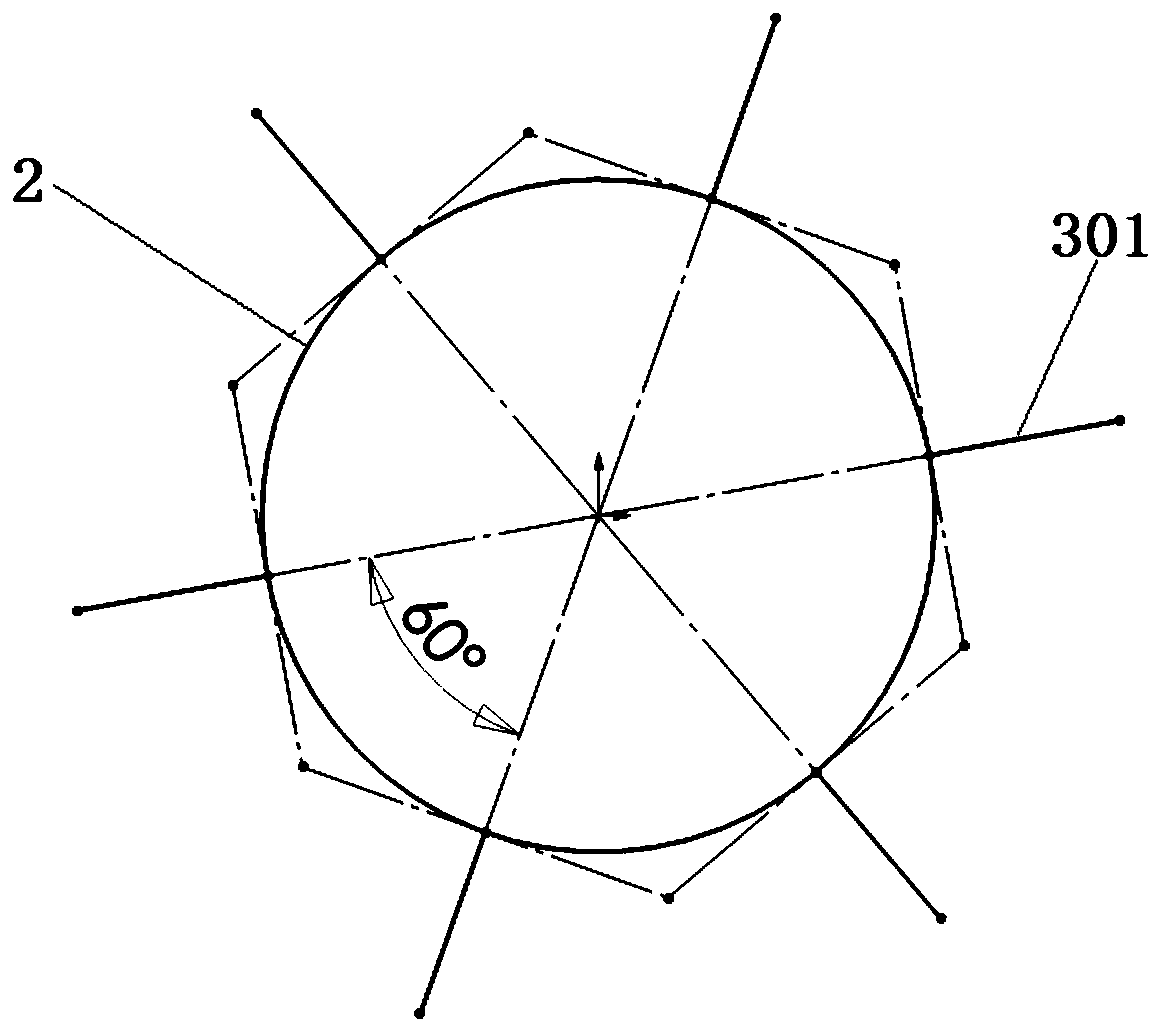A paddle and drone
A blade and blade root technology, applied in the field of blades and UAVs, can solve the problems of reducing the efficiency of UAVs, the blades cannot be folded, and the edges of the blades are sharp, etc., so that it is easy to fold and carry out, saving paddles The effect that leaves take up space and are not easy to fly out
- Summary
- Abstract
- Description
- Claims
- Application Information
AI Technical Summary
Problems solved by technology
Method used
Image
Examples
Embodiment 1
[0051] Embodiment 1: The root and / or end of the sub-blade can be made of a magnetic substance such as a sheet magnet, so that the sub-blade is magnetic. In order to allow the sub-blade to be sucked tightly on the avoidance groove, in this embodiment, iron sheets, magnets and other paramagnetic or ferromagnetic substances that can be absorbed by the sub-blade are installed between the top surface of the propeller head and the avoidance grooves on both sides. , the embodiment of the present invention names it as a magnetic sheet or a magnetic block. When the 6 blades of the sub paddle are in the expanded state or the retracted state, they can be adsorbed on the paramagnetic or ferromagnetic substance by their own magnetism. Cling to the avoidance groove. It should be noted that, in order to avoid the phenomenon of magnetic repulsion at the same level, a magnetic attraction piece 707 and a magnetic attraction block 707 should be installed separately between the top surface of the...
Embodiment 2
[0052] Embodiment 2: The sub-blades are made of paramagnetic or ferromagnetic materials, and magnetic substances such as magnets are installed between the top surface of the paddle head and the avoidance grooves on both sides. block; when the 6 blades of the sub paddles are in the unfolded state or in the retracted state, they can be respectively adsorbed on the paramagnetic or ferromagnetic substances, and cling to the avoidance groove.
[0053] The structure of the above relevant embodiment one and embodiment two can refer to Figure 7 The schematic diagram of the cross-sectional structure of the blade is shown, in which the parts with the part numbers 707 and 708 can be magnetic sheets, magnetic blocks, magnetic sheets or magnetic blocks, and the differences are mainly reflected in their materials.
Embodiment approach
[0054] Figure 7 A schematic diagram of a cross-sectional structure of a blade according to an embodiment of the present invention is shown. Further, in order to avoid the sub-blade accidentally unfolding and keeping it in the unfolded state in a static state, causing damage, the magnet on the top surface of the sub-blade can be replaced by an energized coil. Since the propeller head is moving, the coil’s The power supply should also be designed accordingly. The specific implementation is as follows:
[0055] A circle of coil 701 is embedded on the top surface of the paddle head 2 , and the winding of the coil 701 is symmetrical to the center of the rotation axis of the paddle head 2 and passes above the two avoidance grooves. Both ends of the coil 701 are arranged near the rotation axis of the paddle head 2 . As can be seen from the structure introduced above, the motor shaft 501 of the driving motor 5 is fixed on the rotation axis of the propeller head 2; Cooperate to re...
PUM
 Login to View More
Login to View More Abstract
Description
Claims
Application Information
 Login to View More
Login to View More - R&D
- Intellectual Property
- Life Sciences
- Materials
- Tech Scout
- Unparalleled Data Quality
- Higher Quality Content
- 60% Fewer Hallucinations
Browse by: Latest US Patents, China's latest patents, Technical Efficacy Thesaurus, Application Domain, Technology Topic, Popular Technical Reports.
© 2025 PatSnap. All rights reserved.Legal|Privacy policy|Modern Slavery Act Transparency Statement|Sitemap|About US| Contact US: help@patsnap.com



